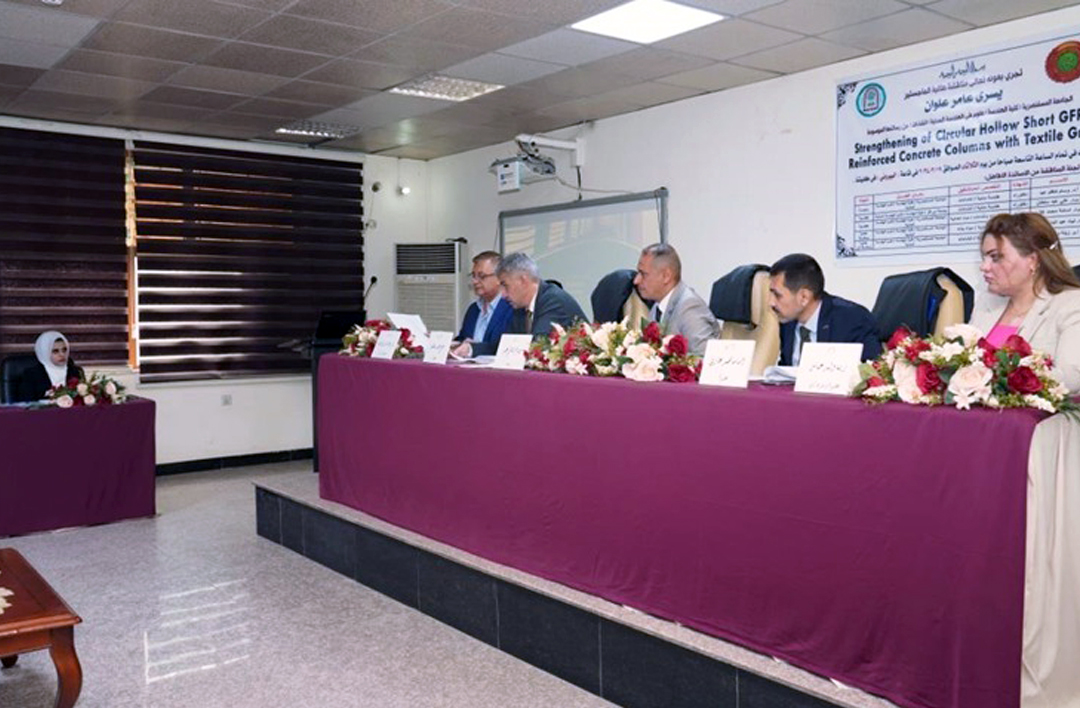College of Engineering, University of Mustansiriyah discussed a master dissertation on the behavior of short, circular, hollow concrete columns reinforced with fiberglass rods and reinforced with textile mesh by the postgraduate student, Ms. Yusra Amer Alwan.
The dissertation aimed at studying the hollow structural elements that are adopted by designers and building engineers, most notably the hollow columns and hollow lintels in bridges and huge construction structures, with the aim at reducing the heavy and large weights of these sections that can affect the foundations and supporting soil.
The dissertation concluded that the maximum load capacity and first crack load were (11.2 – 15.8%) with a ratio of (31.5 – 38.15%), respectively, for hollow circular concrete columns reinforced with fabric from the inside (whether one or two layers) compared to non-reinforced columns, the maximum load capacity and first split load were (9.93 – 17.8%) with a ratio of (28.9 – 42.1%), respectively, for columns reinforced with fabric from the outside (whether one or two layers) compared to non-reinforced columns. Also, the maximum loare capacity and first split load were (11 – 25.16% (12.9 – 47.3%), respectively, for columns reinforced with fabric from the inside and outside (whether one layer or two layers), the maximum load capacity for concrete columns with a diameter of (13) mm (GFRP) bars is (7.9 – 23.8%) in comparison with concrete columns with a rod diameter of (10) mm.





























































